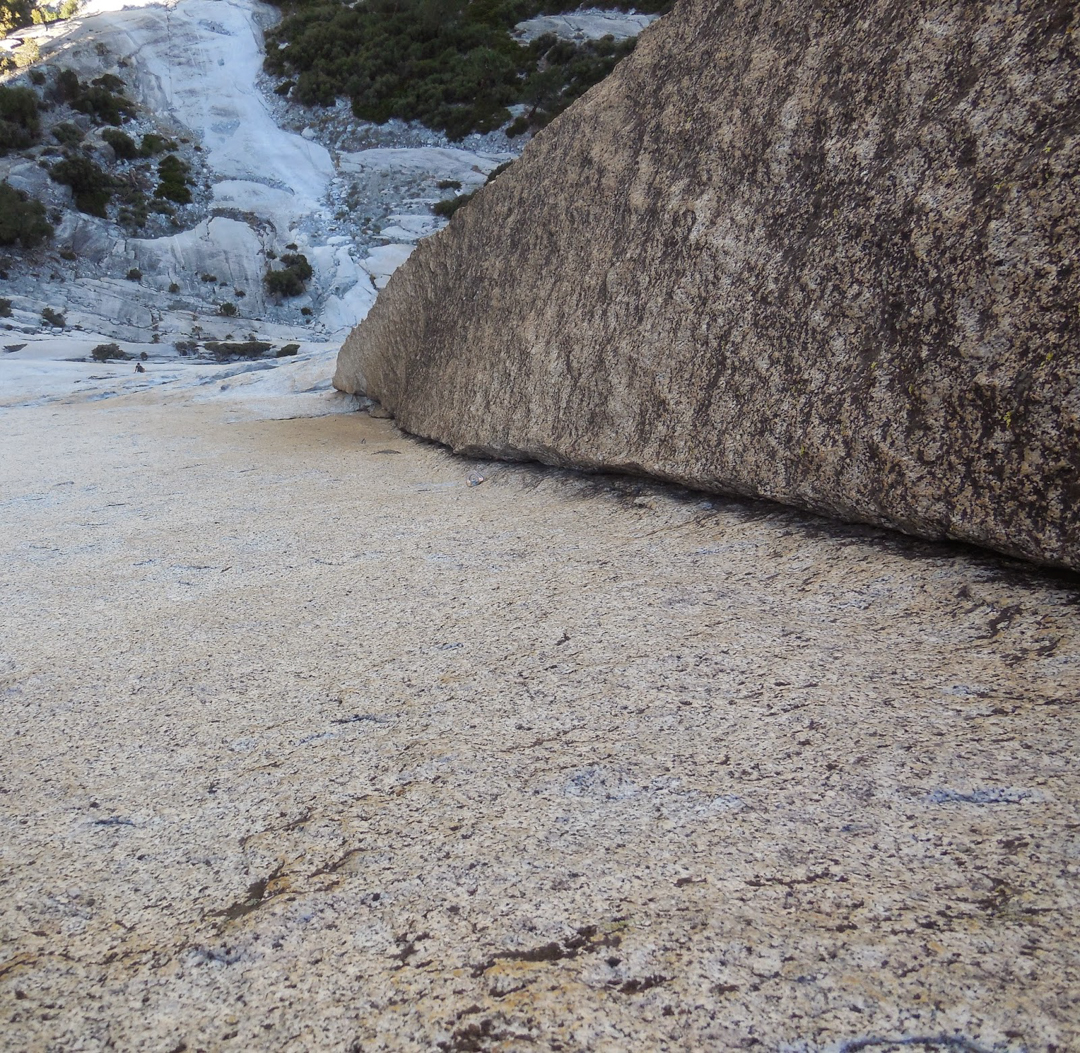Bubbs Creek Wall, South Face, The Emperor
California. Kings Canyon National Park
 Exploring new lines on peaks deep in the backcountry rarely makes someone a stronger climber, right? At least I didn't think so.
Exploring new lines on peaks deep in the backcountry rarely makes someone a stronger climber, right? At least I didn't think so.
Having read about Bubbs Creek Wall from multiple internet threads, I wanted to see it for myself. This wall has five established routes along with some free variations, all put up by true all-star teams of backcountry, first-ascent smashers. [Editor’s note: The five routes, described from left to right, include, Crystal Banzai (VI 5.11 A3, Joe-Leversee, AAJ 1987); Samurai Warrior (V 5.11 A1, Nettle-Thau, AAJ 1998)—Brandon Thau and Peter Croft completed a free ascent of this line in 2005 via a 5.12a variation that they dubbed “Ronin”; What’s Up Bubb (VI 5.9 A3, Brown-Mayo, 2000)—Luke Stefurak and Casey Zak completed a free ascent of this line in 2014 via a few variations at 5.12a and dubbed the line “Sensei”; Aquaman (IV 5.10+, Leversee-McConachie, AAJ 1984); and the Beckey Route (IV 5.8 A2, Beckey-Cundiff-Losleben-McGoey, AAJ 1976).]
I first made the nine-mile hike in July to look for a new line on the east or west faces, though these walls turned out to be full of vegetation. Thoughts of a line on the south face, splitting down the middle between the Samurai Warrior and What’s Up Bubb crossed my mind, but chances of that seemed slim to none. I looked anyway.
 All hopes for a new line seemed like delusions after I aided one pitch and encountered a blank face above. However, with a second day on the wall, my partner and I discovered a stance to drill from on that blank face, and then another. By the end of the trip we had completed three new pitches and an ascent of Aquaman. The following week I came back and climbed two more pitches; another trip produced four more. Every time I returned to climb, I went home humbled and physically and mentally drained by the continuous difficulties and endlessness of the wall.
All hopes for a new line seemed like delusions after I aided one pitch and encountered a blank face above. However, with a second day on the wall, my partner and I discovered a stance to drill from on that blank face, and then another. By the end of the trip we had completed three new pitches and an ascent of Aquaman. The following week I came back and climbed two more pitches; another trip produced four more. Every time I returned to climb, I went home humbled and physically and mentally drained by the continuous difficulties and endlessness of the wall.
 Each pitch seemed highly improbable, but simply being on such a beautiful wall yielded great satisfaction. The climbing was beautiful and varied, from technical faces to burly liebacks, stems, and awesome dikes.I was soon able to redpoint a couple of the pitches, but many required direct aid. With such a grim beginning I could have abandoned this madness, but I couldn’t keep it off my mind. When I was at work I would stare at the photos of the wall and ponder the overhanging corners. Is it possible to get to them? Would the giant roof allow a free passage? When I was at home I had trouble falling asleep because I was not sure if the moves on the pitches would go free. Over time, individual pitches went from impossible on top-rope to doable on lead.
Each pitch seemed highly improbable, but simply being on such a beautiful wall yielded great satisfaction. The climbing was beautiful and varied, from technical faces to burly liebacks, stems, and awesome dikes.I was soon able to redpoint a couple of the pitches, but many required direct aid. With such a grim beginning I could have abandoned this madness, but I couldn’t keep it off my mind. When I was at work I would stare at the photos of the wall and ponder the overhanging corners. Is it possible to get to them? Would the giant roof allow a free passage? When I was at home I had trouble falling asleep because I was not sure if the moves on the pitches would go free. Over time, individual pitches went from impossible on top-rope to doable on lead.
After about 20 days of work on the route using a variety of tactics, my seventh partner, Luke Stefurak, and I completed the climb ground-up, including the final six pitches to the top of the formation. Out of 16 pitches, I led 13. [Editor’s note: The last 400’ are shared with the recently free-climbed route What’s Up Bubb.] Even though free-climbing on the Emperor (16 pitches, V 5.11d A1) initially seemed too difficult for me, the first eight pitches now go free—5.11c, 5.11a, 5.11d, 5.11c, 5.11c, 5.11a, 5.11a, and 5.11b. Additionally, pitch 9 has been followed free, pitch 10 goes at 5.11a, pitch 11 goes at 5.10a, pitch 12 was followed clean at solid 5.11, and pitch 13 will go at 5.11a and was also followed free. The only big question mark is a tough 15’ section on pitch 14.
My New Year’s resolution is an easy guess—I hope to free-climb the rest of this outrageously sustained route next season.
Vitaliy Musiyenko










